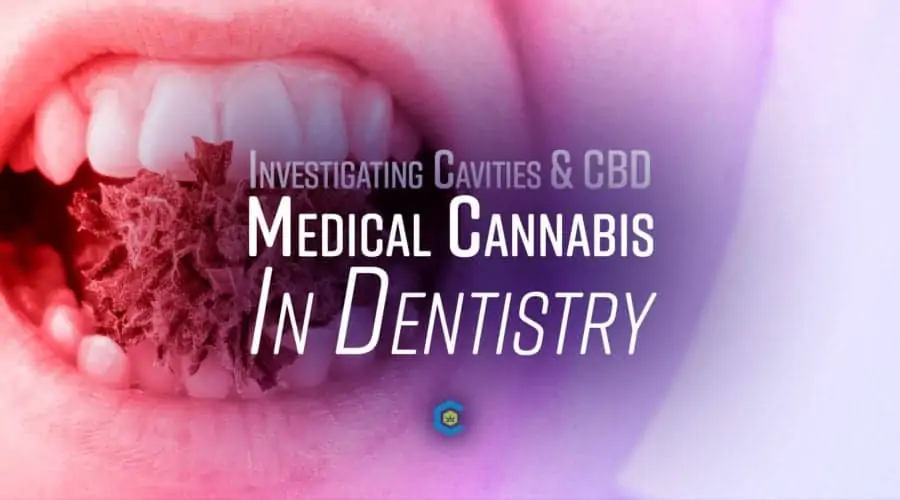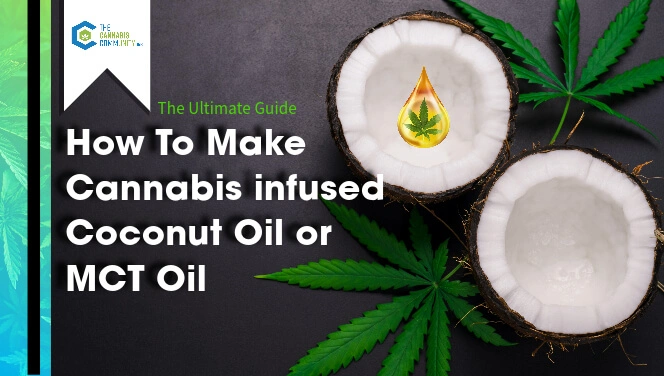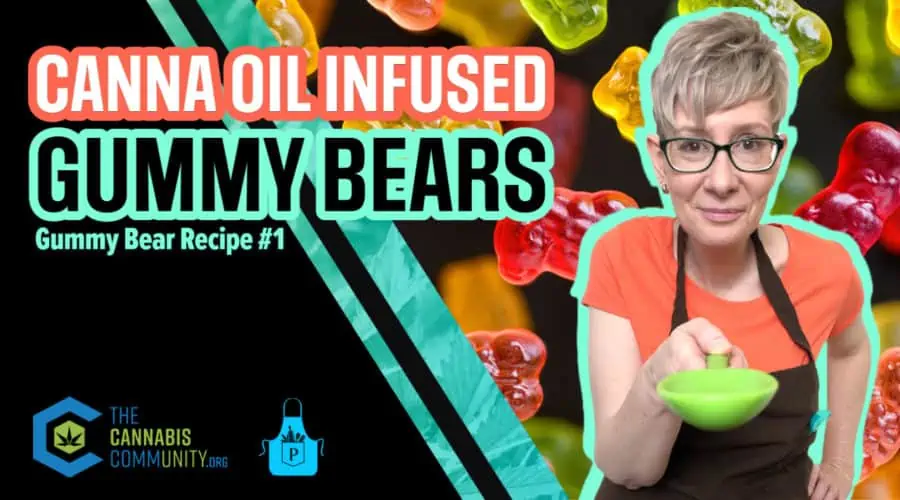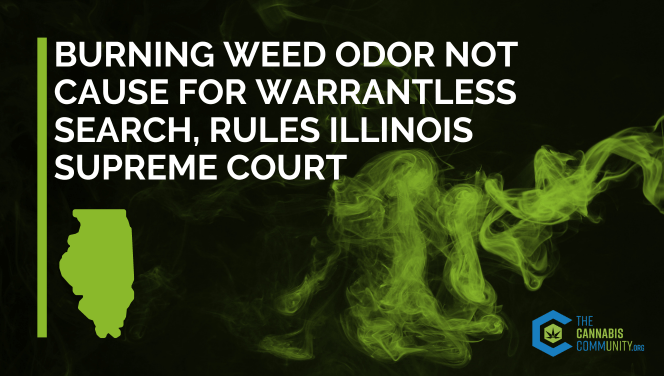Dentistry and Oral Diseases: Investigating the Role of Medical Cannabis in Dentistry
Table of Contents
As medical cannabis continues to make its sweeping comeback into mainstream society and modern medicine, the majority of research and clinical data exclusively concerns its effects on the human body.
While dentistry predates to 16th century Renaissance times, modern medicine has largely failed to investigate the potential benefits of cannabis and hemp for oral hygiene and disease prevention 1.
Can medical cannabis and hemp-derived CBD effectively prevent bacterial growth, cavities, or potentially even oral cancers? Are they helpful in the treatment of these and other various oral pathologies?
This scientific review will explore the currently available scientific literature and clinical data to help illustrate the current state of affairs related to medical cannabis, hemp, and dentistry.
What is Oral Disease & Why is it Important?
Oral diseases are one of the most common health-related ailments facing the modern world 2. While society often impresses our youth to brush and floss from an early age, good oral health extends far beyond clean teeth. It involves the gums, palate, lining of the mouth, throat, tongue, lips, salivary glands, muscles and nerves, and the bones of the upper and lower jaws 3.
Recent studies have linked possible associations between chronic oral infections and serious illnesses from diabetes and cardiovascular disease to stroke and premature births 4.
Even more important is that the most common oral diseases can be prevented; thus, education and oral health literacy are imperative to cultivating a healthy society.
What Are the Most Common Oral Diseases?
Dental caries (cavities), gingivitis (gum disease), and periodontitis are the most common oral diseases, all of which have proven to be preventable5.
By understanding the inflammatory and bacterial biological pathways that lead to these illnesses, the medicinal benefits of cannabis and hemp can potentially be applied to treating these conditions.
What Causes Most Oral Diseases & What Are Their Symptoms?
The two most significant causal factors that lead to the aforementioned oral diseases are inflammation and bacterial infection 1.
A more accurate depiction of the pathway to oral disease can be seen in Figure 1 (credit: www.principesactifs.org) below.
The general mechanism involves poor oral hygiene, bacterial growth, acid production and pH imbalance (creating a beneficial environment for bacterial growth), and demineralization of enamel, finally leading to the most common diseases of Caries lesions, inflammation, and infection as well as pain 1.
By understanding the mechanism and etiologies of these diseases, we begin to understand how anti-inflammatory and anti-bacterial cannabinoids like CBD and analgesic combinations of CBD and THC can be clinically therapeutic in the scope of oral health 1.
Examining the Potential Role of Cannabinoids in Dentistry:
- Potential Benefits of Cannabidiol (CBD) in Dentistry
The aforementioned biochemical mechanisms behind the pathogenesis of oral diseases and their associated symptoms set the stage for further investigation of cannabinoid therapy in dentistry.
Cannabidiol (CBD), a powerfully medicinal and non-psychoactive component of Cannabis Sativa, shows immense promise in this field due to its anti-inflammatory, antimicrobial and anti-nociceptive (analgesic) properties 6.
Additionally, a 2017 study demonstrated that CBD shows clinical promise in treating oral mucositis 7. Hemp varietals of the cannabis plant are rich in CBD and legal in all 50 states due to containing only trace levels of THC (0.3% or less) and maybe a more accessible option for patients around the country.
Potential Benefits of THC in Dentistry
THC, along with combined formulations of THC and CBD (such as Sativex, a 1:1 whole plant pharmaceutical preparation of cannabis), has already been identified as a clinically effective pain reliever and should be considered more frequently as an alternative to more commonly used opioid pain medicine in dentistry 8,9.
Pain treatment is particularly relevant today when prescription opioid and illicit opioid abuse is a severe epidemiological public health concern.
Other Potentially Effective Cannabinoids in the Treatment of Oral Disease
Cannabis has been dubbed as the plant of one thousand and one molecules due to its diversity of active compounds (cannabinoids) and their interplay with an even more significant number of terpenoids 10.
Figure 2 (credit: marijuana.com) below presents potential therapeutic targets for various cannabinoids beyond THC and CBD.
Particular attention should be paid to the anti-bacterial and anti-inflammatory properties and benefits of the cannabinoids as they are one of the most salient qualities needed in dentistry 1.
A Cautionary Note
Unfortunately, most research into cannabis use and oral health revolves around potential adverse effects on oral health instead of using cannabis or hemp as a medicine for treatment.
These concerns are primarily tied to the toxicity of smoking and smoke inhalation on oral health 11.
While the discussion about the potential dangers of combusting cannabis and inhaling its fumes is another story entirely (which can be found here), its impact on oral health should be more carefully studied.
Further Research Into Cannabinoids & Dentistry Is Needed
Currently, there exists minimal clinical data on the role of cannabis in dentistry. However, preliminary literature review and analysis suggests cannabis and hemp can be powerful tools in dentistry and managing oral disease.
Currently, it is all too common to receive a prescription for hydrocodone or oxycodone for orthodontic surgery or even bad toothaches.
While this may be appropriate for some patients, history has made it abundantly clear that non-opioid alternatives for managing pain is crucial while dealing with the current opioid crisis.
Patients in recovery from opioid abuse may indeed benefit far more from using cannabis or hemp-derived pain medication following oral surgery than assuming the risks of using opioids.
Furthermore, CBD’s anti-inflammatory and antimicrobial properties are especially promising for the field. With time and adequate research, it may just be a matter of time before cannabis and cannabinoid therapy find their way into dentistry!
Get Your Medical Cannabis Card in Minutes
Enjoyed This Content? Read More:
-
How to Make Cannabis-Infused Coconut Oil or MCT Oil: Crockpot Recipes
In this guide, you’ll learn how to make cannabis-infused coconut oil or MCT oil, decarboxylate cannabis, or choose to infuse cannabis into any oil of your choice.
-
How to Make THC Gummy Bears with Canna Oil
This is a great no-fail recipe for beginners. The corn syrup in this recipe will help your gummy bears have that nice and chewy texture we’ve all come to love.
-
Burning Weed Odor Not Cause for Warrantless Search, Rules Illinois Supreme Court
A Landmark Case for IL Medical Cannabis Patient Protections On September 9th, the Illinois Supreme Court issued a major victory for cannabis consumers and patients, declaring that the aroma of burnt cannabis is insufficient probable cause for a warrantless search. Illinois has long been at the forefront of the fight for plant medicine. Medical patients…
-
GMO Cookies: A Strain Review of Its Potent Aroma and Powerful Effects
GMO Cookies is a popular cannabis strain for homegrow. Here’s what you need to know to get started with these seeds.
-
Cherry Pie Cannabis Strain: A Sweet Treat with Potent Effects
Cherry Pie is a popular cannabis strain for homegrow. Here’s what you need to know to get started with these seeds.
Works Cited
- CBD in Dentistry – Can Cannabis Cure Cavities? Principes actifs (2015).
- Myburgh, N. G., Hobdell, M. H. & Lalloo, R. African countries propose a regional oral health strategy: The Dakar Report from 1998. Oral Dis. 10, 129–137 (2004).
- Benjamin, R. M. Oral Health: The Silent Epidemic. Public Health Rep. 125, 158–159 (2010).
- Health, U. S. D. of & Services, H. Oral Health in America : A report of the Surgeon General. NIH Publ. 155–188 (2000).
- Vodanović, M. [Prevention of oral diseases]. Acta Medica Croat. Cas. Hravatske Akad. Med. Znan. 67, 251–254 (2013).
- Bruni, N. et al. Cannabinoid Delivery Systems for Pain and Inflammation Treatment. Mol. J. Synth. Chem. Nat. Prod. Chem. 23, (2018).
- Cuba, L. F., Salum, F. G., Cherubini, K. & Figueiredo, M. a. Z. Cannabidiol: an alternative therapeutic agent for oral mucositis? J. Clin. Pharm. Ther. 42, 245–250 (2017).
- Hill, K. P., Palastro, M. D., Johnson, B. & Ditre, J. W. Cannabis, and Pain: A Clinical Review. Cannabis Cannabinoid Res. 2, 96–104 (2017).
- Russo, E. B. Cannabinoids in the management of difficult-to-treat pain. Ther. Clin. Risk Manag. 4, 245–259 (2008).
- Cannabis sativa: The Plant of the Thousand and One Molecule. Available at: https://www.ncbi.nlm.nih.gov/pmc/articles/PMC4740396/. (Accessed: 14th May 2019)
- Significance of cannabis use to dental practice. – PubMed – NCBI. (Accessed: 5th June 2019)








